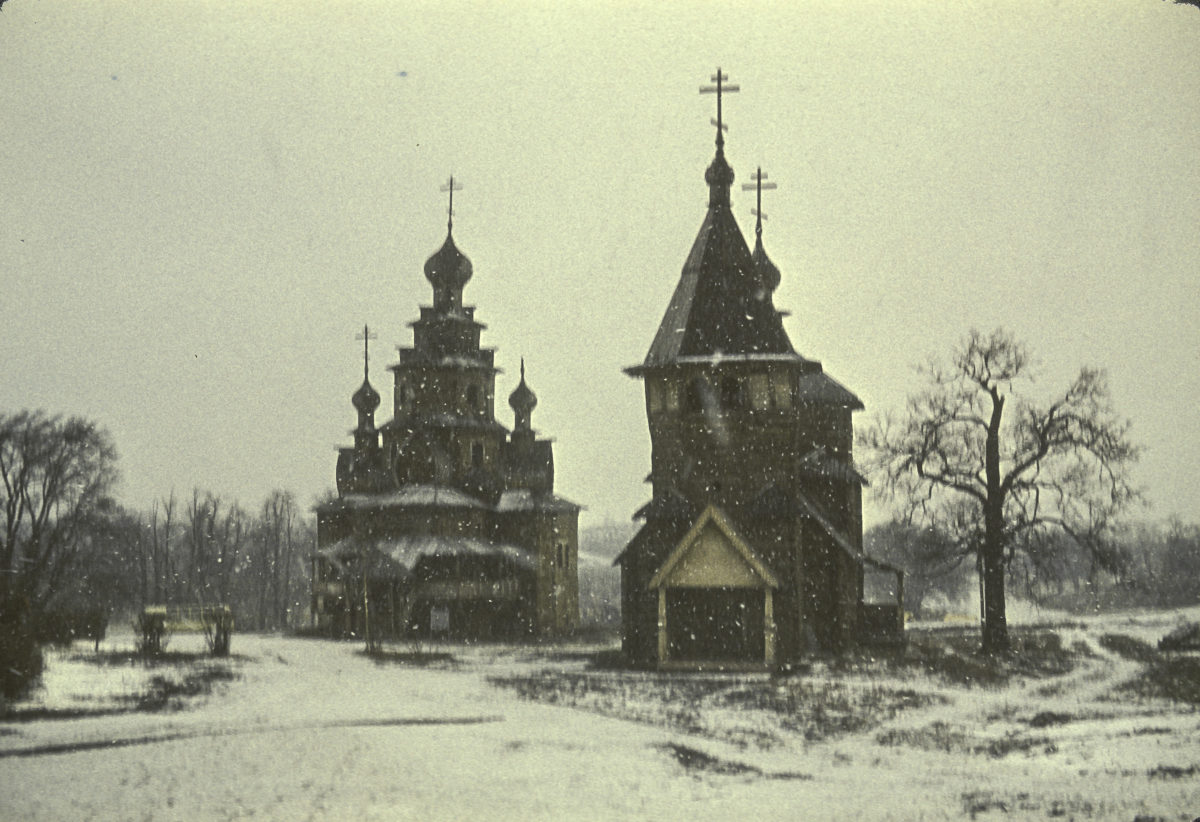In January ’73 I made a couple of trips to some of the Old Russian towns northeast of Moscow, in what had once been known as the Vladimir-Suzdal area. This region first came into prominence in the 12th century AD, as the civil wars among the Russian princes and the depredations of the steppe nomads began to sap the strength of the Kievan principality.
One trip, which I made together with my girlfriend Vera, was to Suzdal itself. Suzdal is a very small town, with a population of about 10,000 today, and probably less when we were there in 1973. But it is a very old town, and under Prince Yuri Dolgoruky, who founded Moscow in 1147, it was already the capital of its own principality, Rostov-Suzdal, later renamed to Vladimir-Suzdal when Yuri’s son Andrei Bogoliubsky transferred the capital to Vladimir in 1157. Eventually, in 1392, Suzdal was absorbed into the rising principality of Moscow. Thereafter it remained an important commercial and religious center, with an impressive number of churches, mostly built and paid for by wealthy merchants. But in the 19th century, its mercantile importance took a serious hit with the building of the Trans-Siberian Railroad, which bypassed Suzdal in favor of its rival Vladimir, 35 kilometers (22 miles) to the south.
Yet the economic eclipse of the town became its salvation as a historical and religious site. In the Soviet period it avoided industrialization and retained its character as an Old Russian provincial town, and the government reinforced this fortuitous “backwardness” by making it an officially protected site, off-limits to industrial development, in 1967. Since the end of the Soviet regime, it has blossomed into a major tourist attraction, and is considered to be the best-preserved of the Golden Ring towns.
When I was there in 1973, in the dead of winter, Suzdal seemed like a typical run-down, backwater town, but despite its overall forlorn appearance there were wonderful sights to see. I don’t remember at all how we got there – it had to have been by bus – but we began our tour, which was made entirely on foot, at the north end of town. This was the domain of great monasteries and convents. The first one we came across was the Pokrovsky (Intercession) Convent. It was founded in 1364, but nothing from that time has survived, and the imposing structures currently found there date mostly from the 16th century. Beginning in the reign of Vasily III, the Pokrovsky Convent became a haven for aristocratic women taking the vows, whether voluntarily or involuntarily, and during the later 16th and 17th centuries it was one of the largest and richest convents in Russia.
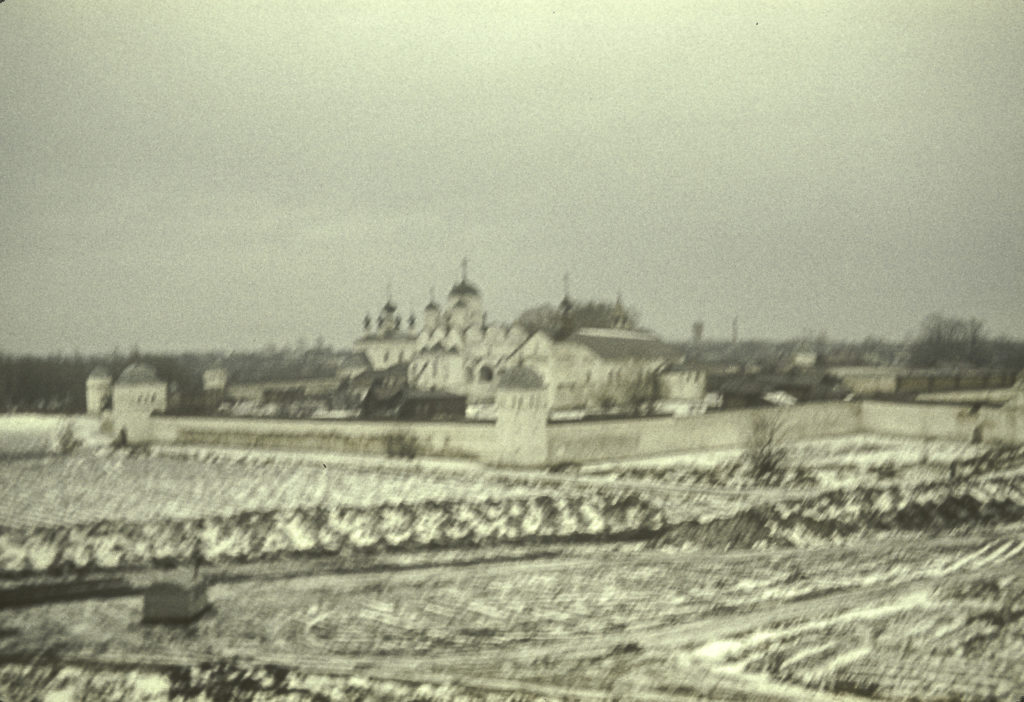
I’m not exactly sure why the convent was equipped with such formidable walls and towers – was it more to keep the nuns safe from the outside world, or to keep them from getting out? Whatever the case, there is less doubt about the next monastery we saw, the Spaso-Efimiev (Savior Monastery of St. Euthemius), which for much of its existence was used as a prison. Like the Pokrovsky Convent, it was founded in the 14th century (1352), but the current structures date from the 16th and 17th centuries. It benefited from donations by Vasily II, Ivan the Terrible, and the Pozharsky family, one of whose scions, Dmitri Pozharsky, was (along with Kuzma Minin, the butcher from Nizhnyi Novgorod) the leader of the national uprising that expelled the Poles from Muscovy at the end of the Time of Troubles in the early 17th century. His grave lies by the wall of the Spaso-Preobrazhensky Cathedral, inside the walls of the monastery.
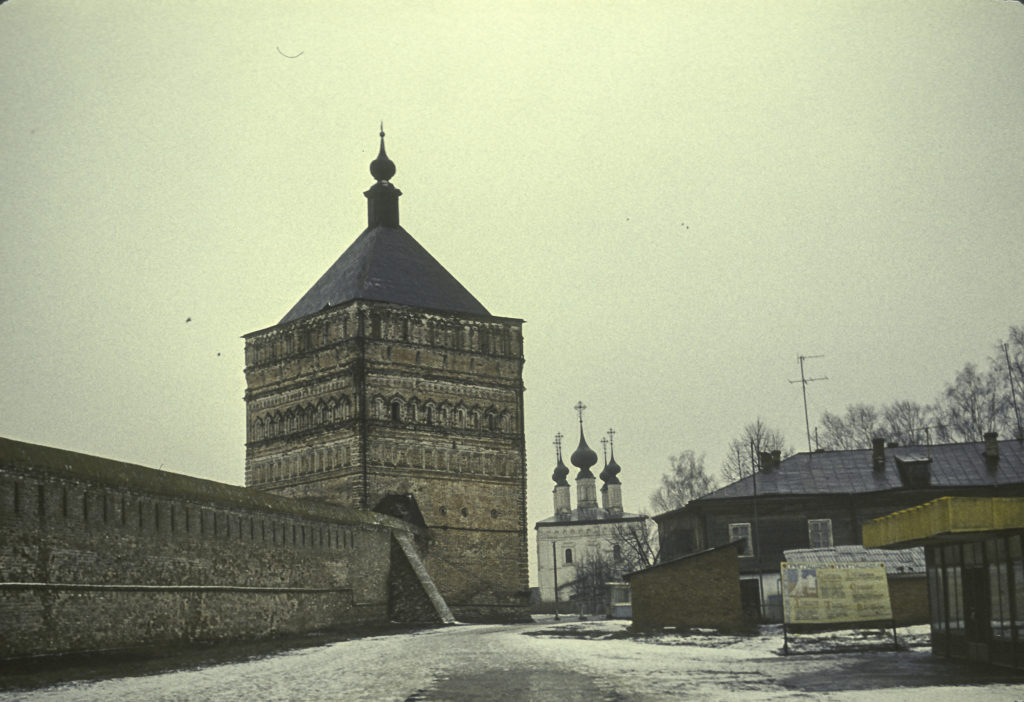
The Spaso-Efimiev Monastery began as a fortress, intended for the defense of the city, to keep invaders out, but it eventually became instead a place for keeping people in, i.e. a prison. The frowning walls and grim towers of the monastery certainly give it the look of a prison. The person most responsible for turning it into one was Catherine II, who in 1766 secularized the monastery and began to use it as a place for confining religious and political dissidents, including but not limited to Old Believers. Thus it remained down to 1905, when the prison was closed; but the Soviets reopened it again in the 1930s, first using it for political prisoners, then during World War II for high-ranking prisoners of war. The German Field Marshal von Paulus, who surrendered his army at Stalingrad, was its most famous inmate.
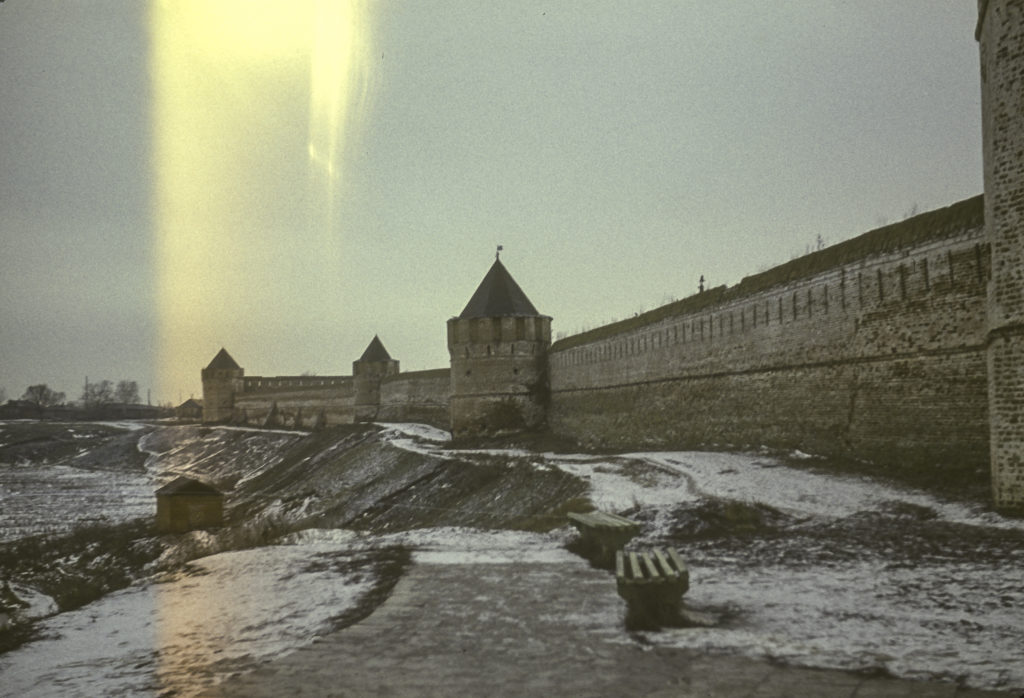
From the Monastery of St. Euthemius we ventured southward toward the town center. On the way we encountered traditional pre-revolutionary Russian houses like the one in the picture below, with all kinds of picturesque wood carvings adorning the exterior. I say “pre-revolutionary” because I doubt that anyone would have had the time or resources to create such obviously labor-intensive constructions while in the throes of revolution, civil war, industrialization, collectivization, World War II and post-war reconstruction efforts.
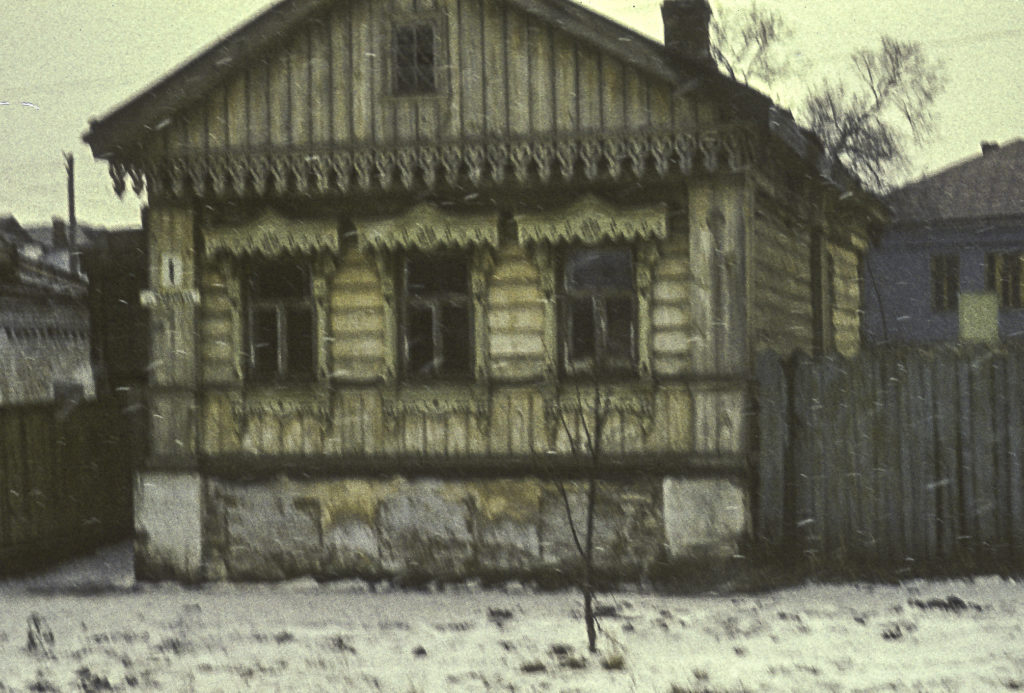
In my experience, with few exceptions the most interesting and attractive structures in Russia are those created before the 1917 Revolution. The house in the picture below, a veritable mansion, is another example of traditional Russian wooden residential architecture.
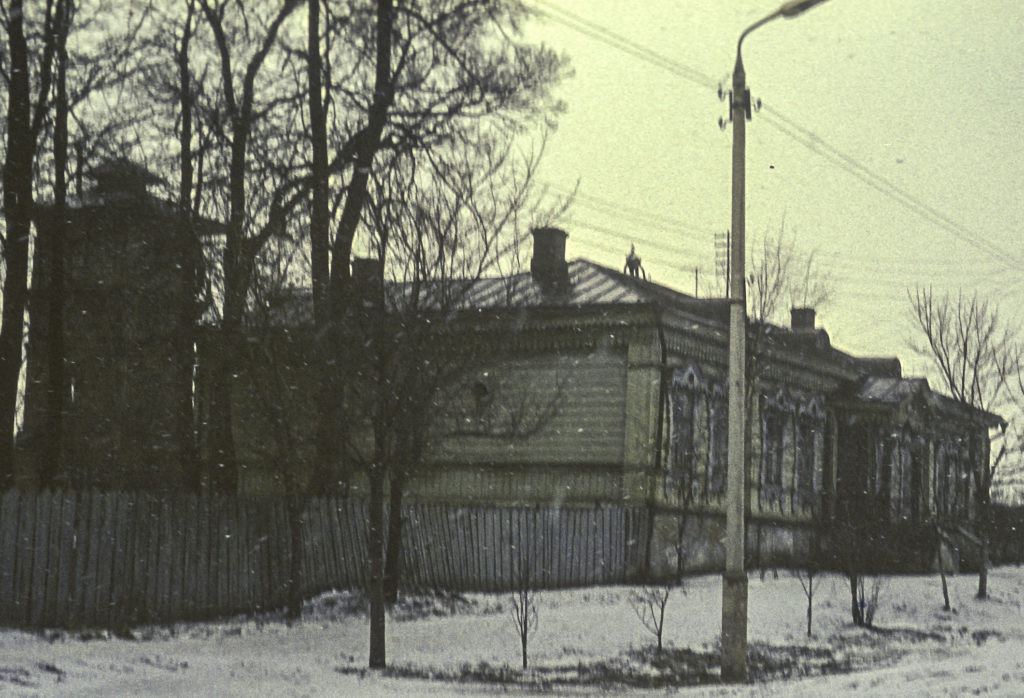
As we continued south toward the center of Suzdal, I observed how the whole town preserved a rural, wide-open appearance, with clusters of buildings interspersed among empty snow-covered fields and woods.
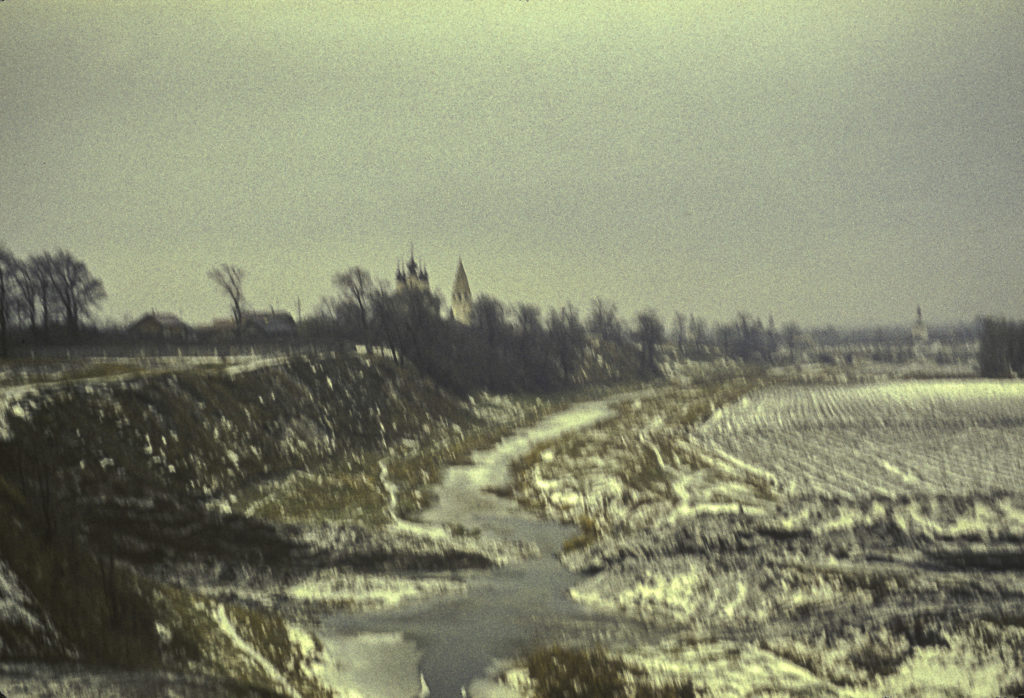
At the heart of old Suzdal was its Kremlin, dating from as early as the 10th century AD. It’s very different from the that of Moscow – it lacks the high stone walls and towers of the latter. In the 11th and 12 centuries an earthen berm was raised around it, on top of which a log stockade with wooden towers was erected. The wooden fortifications burned down in 1719, and today only the earthen berm is left. In the Suzdal Kremlin are situated the Cathedral of the Nativity of the Virgin, the bishop’s palace complex and the wooden Nikolsky Church, not to be confused with the Church of St. Nicholas, which stands outside the Kremlin next to the Church of the Nativity of Christ.
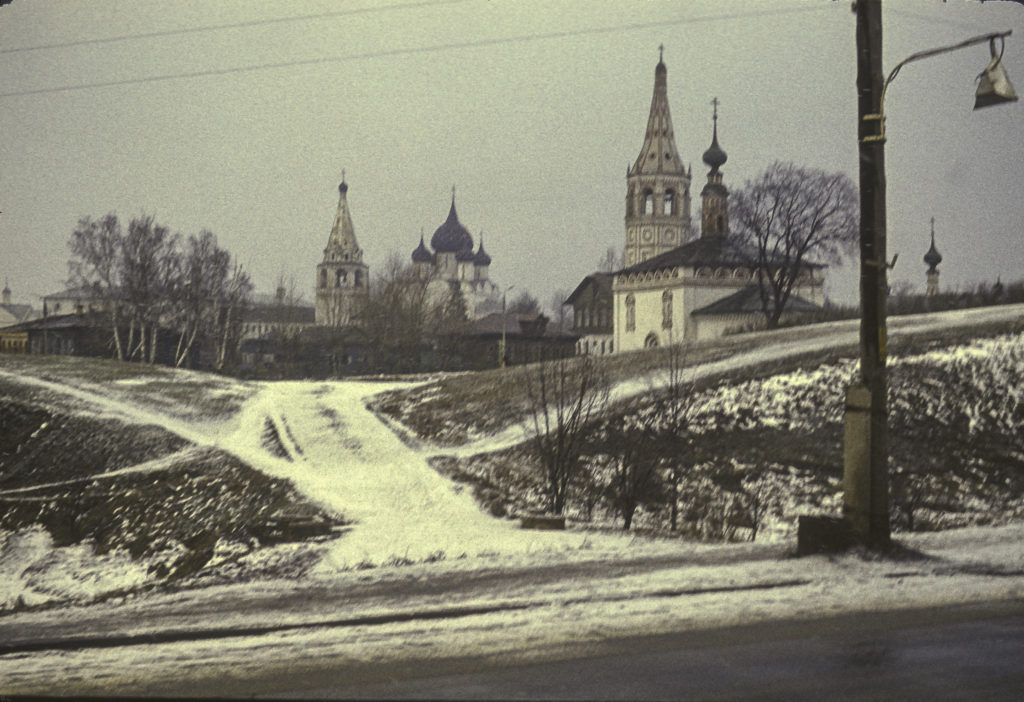
The Cathedral of the Nativity of the Virgin was begun around 1222. In 1445 the Kazan Tatars burned down Suzdal, destroying the upper half of the church, which was rebuilt in 1528, and remodeled again in the 17th century. The bishop’s palace complex grew up next to the cathedral over a period from the fifteenth to the eighteenth centuries and now houses a museum of local history. The wooden Nikolsky Church, a prime example of a simple and ancient form of Russian wooden construction, was built in 1766 in a village in the north of the Vladimir region, and transplanted to Suzdal in 1960.
The Suzdal Kremlin is located in the bight of a bend in the Kamenka River, which flows through the town; in midwinter the river was frozen, and we strolled along the banks, watching children play on the ice.
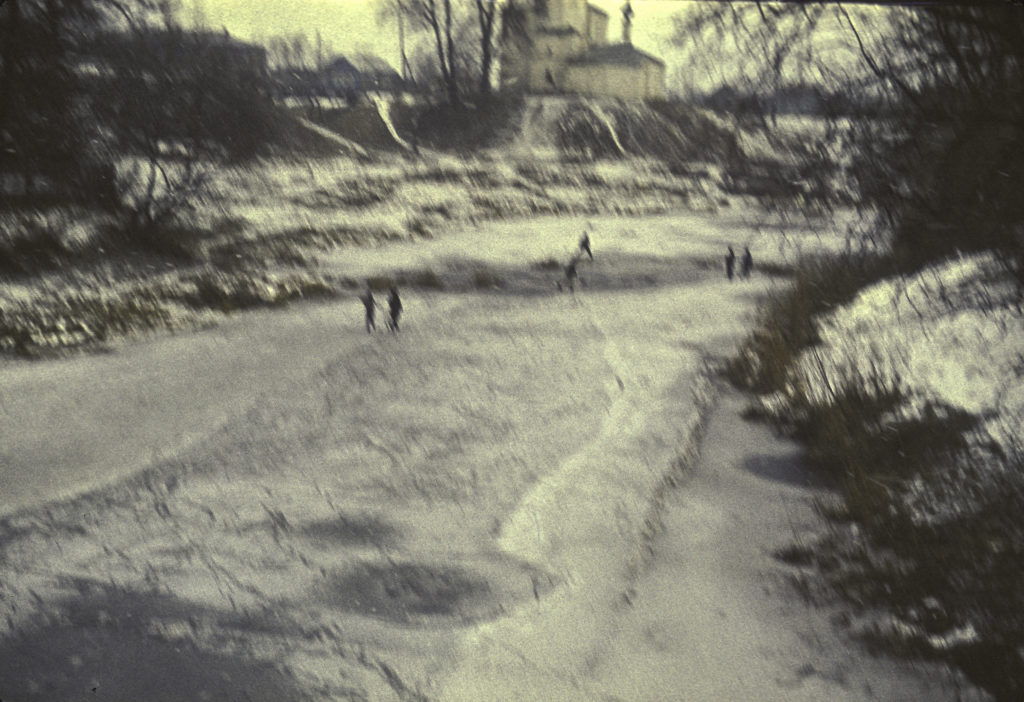
Crossing a bridge to the south bank of the river, we headed for the Museum of Wooden Architecture and Peasant Life. A light snowfall was underway as we came to the Museum. We were not able to view any indoor exhibits – I don’t recall whether it was a holiday or whether no indoor exhibits existed yet – so for us it was strictly an open-air museum.
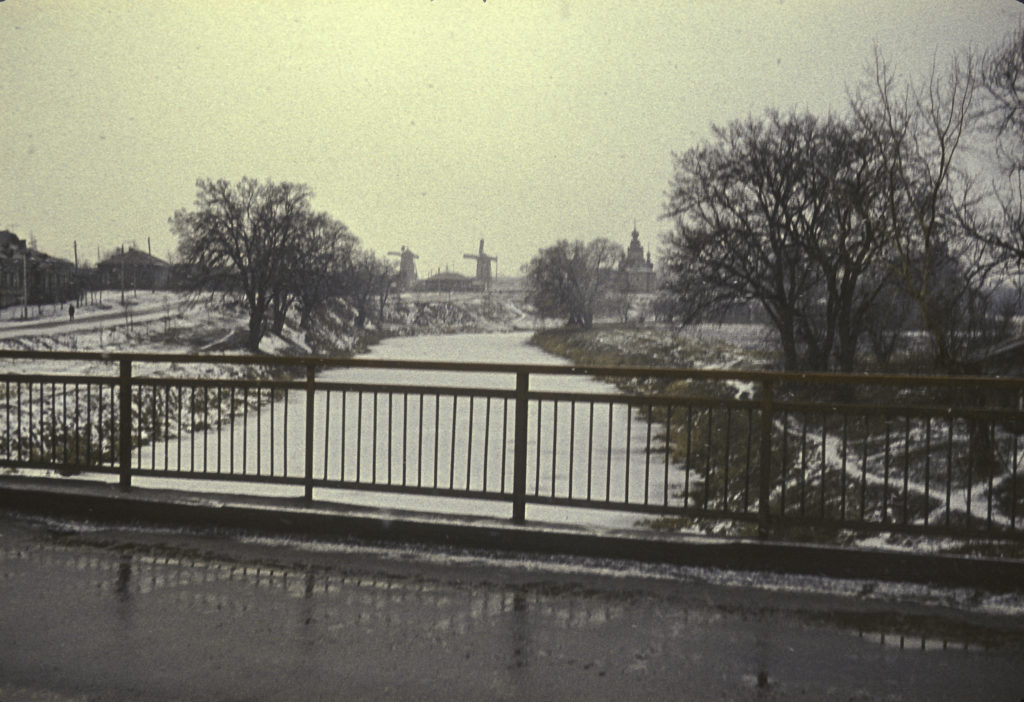
In any case, we found two wooden churches. One has a couple of towers with tiny onion domes at either end of a connecting structure, all with steeply sloped roofs; this is the Church of the Resurrection (). The other has a large central tower with a medium-size onion dome on top and four smaller onion domes on the surrounding corners. This was the Church of the Transfiguration (Tserkov’ Preobrazhenskaya Gospodnya iz Kozlyat’evo). The construction of these wooden churches – and there are many like them all over Russia – is to me amazing: they were built without nails.
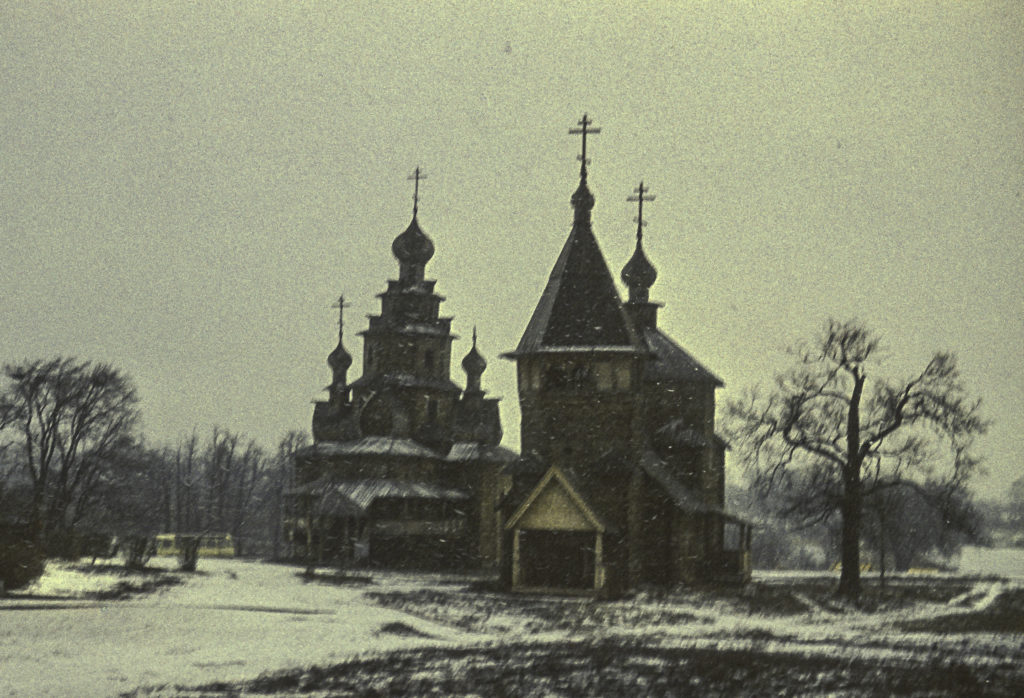
No less surprising to me were the windmills. There were two of them, with four-bladed rotors. I had no idea windmills were used in pre-revolutionary Russia, though it certainly seems like a good idea for the 19th century as well as the 21st.
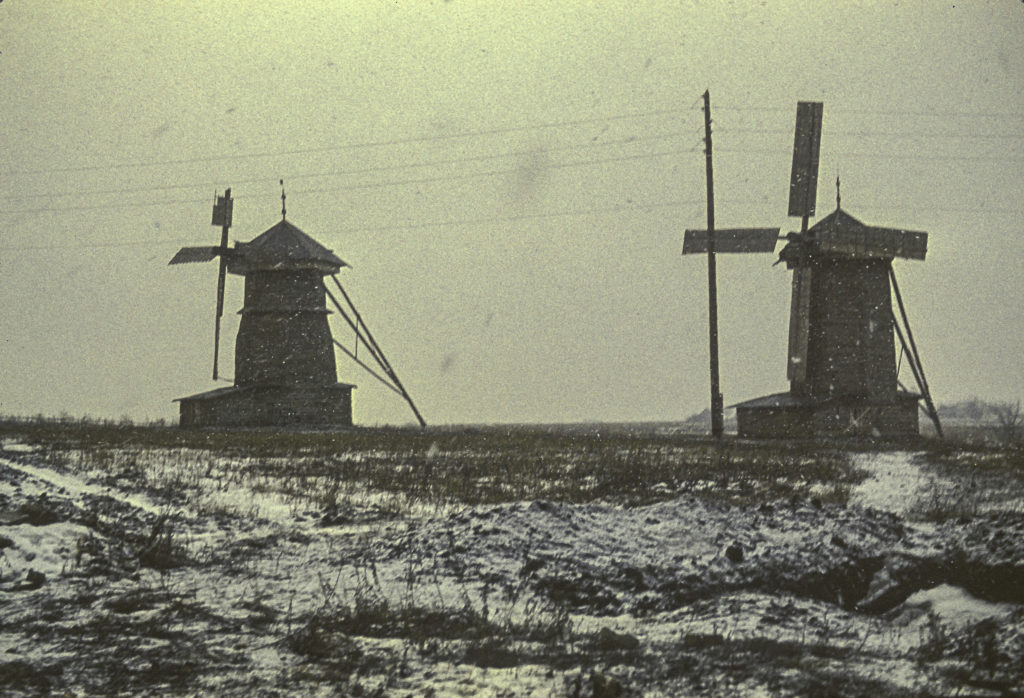
We also encountered a (to me) completely bizarre structure called a kolyosnyi kolodets or “Wheel Well”. This consisted of a large wooden wheel with chocks or steps inside which served as a treadmill. A peasant got inside the wheel and trod on the steps to make the wheel turn. Two large buckets were attached to the wheel with ropes so that they were alternately lowered into the well and brought up full of water. The device was also known as a stupal’nyi kolodets, or “step well”. This one dates from the 19th century.
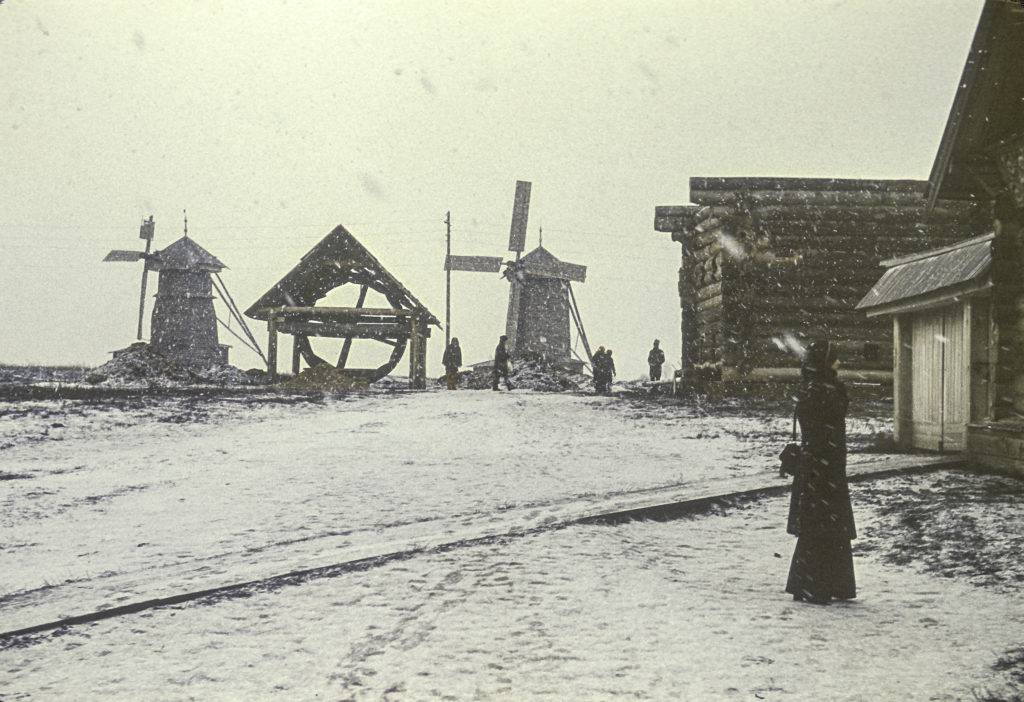
A little way past the Museum of Wooden Architecture, we came across a non-wooden structure, the Church of the Holy Blessed Princes Boris and Gleb. These were Russian princes, sons of Vladimir the Great, the ruler of Kievan Russia, who contrived to convert his subjects to Christianity in 988. Legend has it that when Vladimir died in 1015, his eldest son Sviatopolk had his younger brothers Boris and Gleb murdered to ensure his succession to the throne. Although the brothers knew of Sviatopolk’s intentions, they refused to raise their hands against him, and because they did not resist evil with violence, they became the first saints canonized by the Russian Orthodox Church after the conversion.
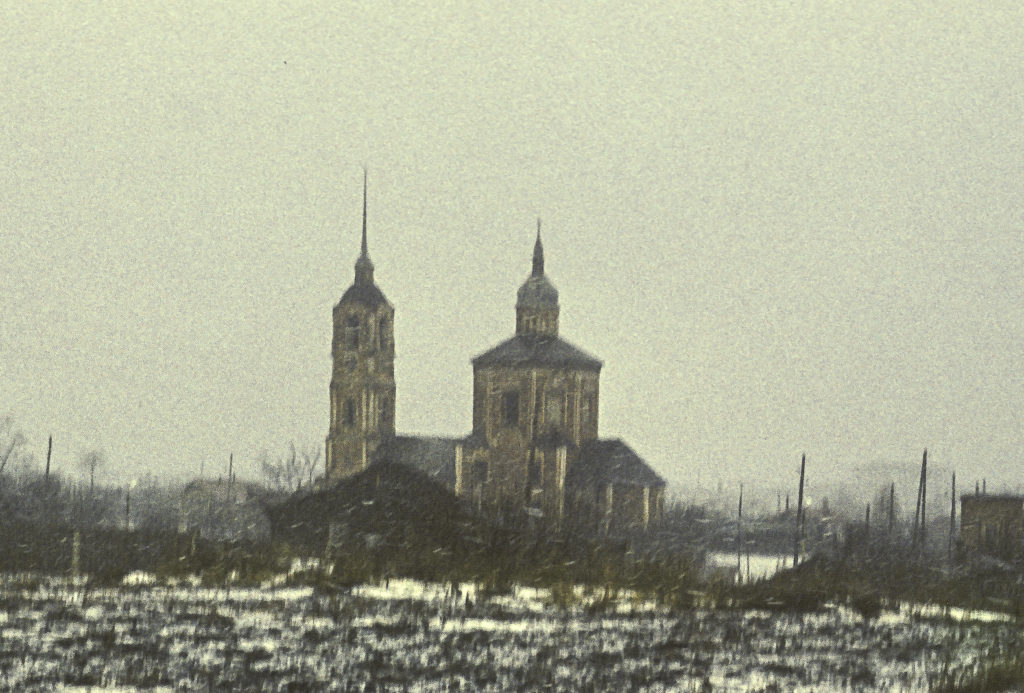
The date of construction of the Boris and Gleb church is uncertain; from the styles involved experts have concluded that it was most likely built at the end of the 17th century, while the bell tower was built later, around 1749. In 1923 it was closed, and it was among several churches earmarked for removal, with the intention of salvaging its remains to be used in the construction of new buildings, for example a town bathhouse. This actually happened to a neighboring church, but the Church of Boris and Gleb somehow was bypassed and survives to this day. In the early 2000s it was returned to the Orthodox Church, which undertook a renovation project in 2017.
Judging from the many photos I’ve seen on the many tourism websites devoted to the old Russian towns, Suzdal, though remaining a small town, would be almost unrecognizable were I to go there today. There are numerous private hotels, restaurants, cafes, and souvenir shops, and many churches and other establishments are now open that were closed to the public in 1973. It appears to me that whatever one may think of the present regime, the demise of communism liberated creative powers of the Russian people which had been bottled up and suppressed for many years and allowed them to find expression in ways that have proven beneficial both to themselves and to visitors like myself. I can’t wait to go back.
